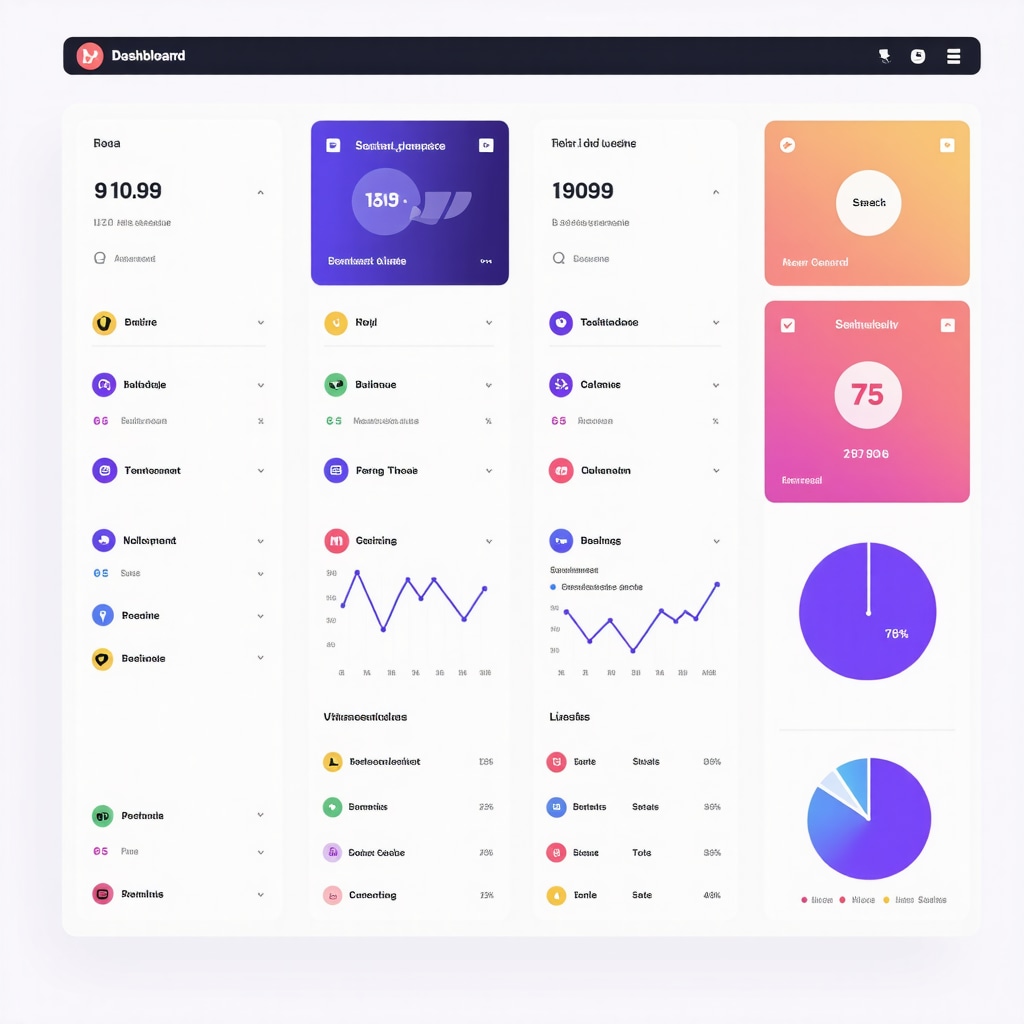Unlocking the Treasure Chest: Why Google Keyword Planner Is Your GMB’s Best Friend
Picture this: you’ve just launched your Google My Business (GMB) profile, but it’s crickets when you check your local search rankings. Frustrating, isn’t it? Here’s where the trusty Google Keyword Planner swoops in like a savvy sidekick, ready to turn your GMB SEO strategies from bland to grand. It’s not just a tool—it’s the secret sauce to boosting your local visibility and luring those customers right to your digital doorstep.
Can a Keyword Tool Really Make or Break Your Local SEO Game?
It’s a fair question—and the answer is a resounding yes! Google Keyword Planner isn’t just for big-shot content marketers; local businesses can harness its power to discover the exact phrases their neighbors are typing into Google. By identifying these keywords, you can tailor your GMB listing, posts, and services to match what your community craves, making you the obvious choice in those “near me” searches.
Step One: Dive Deep Into Local Intent Keywords
Start by entering broad terms related to your business in Google Keyword Planner and filter results by location. This lets you uncover high-traffic, low-competition gems like “best coffee shop downtown” or “affordable plumbing near me.” These phrases are goldmines for GMB optimization because they reflect real local search behavior. Embrace them, sprinkle them throughout your business description and services, and watch your profile climb the ranks.
Step Two: Spy on Competitors Without Being Creepy
Ever wish you had a crystal ball to peek at your rivals’ keywords? Google Keyword Planner is as close as it gets. Plug in competitor business categories or website URLs to reveal the keywords they’re targeting. This intel helps you identify gaps or areas where you can outshine them—maybe a niche service or unique selling point you hadn’t considered emphasizing in your GMB listing.
Step Three: Marry Keywords with Engaging GMB Content
Keywords alone won’t win the day if your content feels robotic or spammy. Use the insights from Keyword Planner to craft natural, conversational descriptions and posts on your GMB profile. Remember, Google loves fresh, relevant content—updating your profile with keyword-rich posts about promotions, events, or customer testimonials keeps your listing vibrant and favored by the algorithm.
Pro Tip: Don’t Forget to Measure and Adapt
Integrating keywords is just the start. Track your profile’s performance using Google Business Insights and adjust your keyword strategy accordingly. Are certain keywords driving more views or actions? Double down on them. Underperforming phrases? Time to pivot. This iterative approach ensures your GMB SEO strategy stays sharp and effective.
For those hungry to dive deeper, exploring how to conduct GMB keyword research effectively can unlock even more local SEO wins.
Google Keyword Planner is not a magic wand, but wielded with savvy, it’s an indispensable compass guiding your GMB profile through the competitive jungle of local search. It’s like having a chat with your customers before they even knock on your door.
Ready to share your own experiences or questions about Google Keyword Planner and GMB SEO? Drop a comment below—let’s get the conversation brewing!
As Search Engine Journal points out, leveraging keyword tools tailored for local SEO can drastically enhance your visibility and customer engagement (source).
Beyond Basics: Harnessing Advanced Features of Google Keyword Planner for GMB Mastery
While many local businesses tap into Google Keyword Planner’s surface-level capabilities, there’s a treasure trove of advanced features that can elevate your Google My Business SEO to expert heights. For instance, leveraging the “Historical Metrics” tool within Keyword Planner reveals seasonal trends in local search interest, allowing you to time your promotions and GMB posts strategically. Imagine pushing a limited-time offer right when keyword searches spike—this kind of precision can dramatically increase your local engagement and conversions.
Additionally, the “Keyword Filters” option enables you to zero in on long-tail keywords with lower competition but high purchase intent. For example, instead of targeting a broad term like “plumber,” you might discover “emergency plumbing service open now” or “licensed plumber near downtown”. These phrases often attract ready-to-buy customers, boosting your chances to appear in the coveted Google 3-Pack and convert searches into actual foot traffic.
Integrating Keyword Insights with Google Business Profile Analytics
Don’t just stop at Keyword Planner data. Cross-reference your findings with Google Business Profile insights to create a feedback loop that continually refines your local SEO strategy. If you notice certain keywords driving more profile views or customer actions like calls or direction requests, prioritize those in your GMB description, posts, and even Q&A sections. This data-driven approach ensures your efforts are not just guesswork but strategically aligned with real user behavior.
For a detailed guide on how to track and interpret these metrics effectively, check out our resource on how to track Google Business insights for local SEO success.
How Can You Effectively Balance Keyword Optimization with Genuine Customer Engagement on GMB?
This question is at the heart of advanced GMB SEO strategies. Overstuffing your profile with keywords risks turning your listing into a bland marketing spiel, potentially alienating visitors and triggering search engine penalties. Instead, the goal is to weave keywords seamlessly into authentic, customer-focused content. Share stories, answer common questions, highlight unique services—all while naturally incorporating the keywords you’ve identified. This builds trust and signals to Google that your business is both relevant and reputable.
According to Moz, local SEO thrives when businesses blend keyword research with a focus on user experience and engagement, creating a sustainable growth path (Moz Local SEO Guide).
Leveraging Competitor Keyword Gaps for Untapped Local Opportunities
Building on competitor analysis, look beyond their targeted keywords to identify neglected niches or underserved customer needs in your area. For example, if competitors emphasize general services, you might spotlight specialized offerings or customer service guarantees. These unique angles, grounded in keyword research and local intent, can differentiate your GMB profile and capture search queries your rivals overlook.
Why not experiment with this tactic today? Dive into effective GMB ranking strategies to discover how you can outmaneuver competitors through smart keyword and content strategies.
We’d love to hear your thoughts—have you uncovered local keyword gems that transformed your GMB performance? Share your experiences or questions in the comments below to help others on their local SEO journey!
Unlocking Seasonal Local SEO Gains: Timing Your GMB Content with Google Keyword Planner’s Historical Data
Seasonality is often overlooked by local businesses striving to optimize their Google My Business profiles. Yet, by harnessing the full power of Google Keyword Planner’s historical metrics, you can uncover when your target audience is actively searching for your services throughout the year. For instance, a landscaping business might discover peaks in keyword searches like “spring lawn care services” or “fall tree trimming near me” at specific months. Armed with this intel, you can schedule GMB posts and special offers aligned perfectly with these search surges, maximizing visibility and engagement exactly when demand is highest.
Consider layering this with Google Business Profile analytics to validate if your seasonal campaigns translated into actual customer actions, such as calls or direction requests. This dynamic feedback loop transforms your marketing from reactive to proactively predictive, securing a competitive edge in local search rankings.
Decoding User Intent Nuances: Beyond Keywords to Customer Mindsets
Advanced local SEO mastery transcends mere keyword insertion; it demands decoding the subtle nuances of user intent embedded within search queries. For example, the phrase “affordable emergency plumber” signals urgency and price sensitivity, while “licensed plumber reviews” indicates a research phase prioritizing trust and quality assurance.
By categorizing keywords according to these intent layers—informational, navigational, transactional—you can tailor your GMB content accordingly. Highlight quick response times and transparent pricing for transactional searches, while showcasing testimonials and certifications for research-oriented queries. This method not only improves your GMB profile’s relevance but also enhances user experience, a critical factor in Google’s local ranking algorithm.
What Are the Best Practices for Integrating Long-Tail Keywords into GMB Posts Without Compromising Readability?
Integrating long-tail keywords into your Google My Business posts requires a delicate balance. To maintain readability and authenticity, focus on weaving keywords naturally within storytelling or customer-focused narratives rather than forced insertions. For example, instead of a keyword-stuffed post like “Affordable emergency plumbing service open now,” craft a post such as “Facing a plumbing emergency? Our licensed team is available 24/7 to provide affordable, fast service right here in downtown.” This approach respects the reader’s experience while signaling relevance to Google’s algorithm.
Additionally, utilize varied keyword forms and synonyms to prevent redundancy and appeal to a broader audience. Incorporate keywords in headers, questions, and calls to action within posts to reinforce topical relevance without sacrificing engagement.
Leveraging Geo-Modifiers and Hyperlocal Keywords: The Secret Sauce to Dominating Neighborhood Searches
Geo-modifiers (e.g., neighborhood, district, or landmark names) embedded within keywords significantly boost your GMB profile’s prominence in hyperlocal searches. Instead of generic terms like “coffee shop,” targeting “coffee shop near Central Park West” or “best espresso in Tribeca” aligns your business precisely with the searcher’s location intent.
This granular approach requires deep local market knowledge combined with Google Keyword Planner’s location filters to identify micro-moments where your business can capture untapped search traffic. Embedding these geo-specific keywords in your business description, services, and posts signals to Google that your business is a relevant, localized choice, increasing your chances of appearing in the coveted Local 3-Pack.
Moreover, pairing geo-modifiers with user-generated content—encouraging customers to mention neighborhood names in reviews—further solidifies your local SEO authority.
For an in-depth examination of geo-modifiers in local SEO strategy, consult the Search Engine Land guide on hyperlocal SEO, which details cutting-edge tactics tailored for neighborhood-level dominance.
Are you ready to dive deeper into advanced keyword tactics or share your experiences optimizing GMB profiles with geo-modifiers? Engage with us below and let’s advance your local SEO expertise together!
The Power of Semantic SEO: Beyond Traditional Keyword Targeting for Google My Business
As local SEO continues to evolve, savvy business owners are shifting focus from mere keyword stuffing to embracing semantic SEO — the art of understanding and leveraging the context and intent behind search queries. Google’s algorithms increasingly prioritize relevance and user satisfaction, rewarding GMB profiles that speak the language of their customers in a natural, comprehensive way. This means your Google My Business listing should not only include targeted keywords but also related concepts, synonyms, and conversational phrases that enrich your local search footprint.
Tools like Google Keyword Planner can help uncover these semantic relationships by suggesting keyword clusters and topical variations, but integrating them thoughtfully into your GMB content is what sets leaders apart. For a deeper dive into this approach, explore our complete guide to mastering Google Business SEO, which details how semantic optimization drives sustainable local visibility.
Contextual Keyword Mapping: Crafting a Narrative That Resonates with Local Audiences
Contextual keyword mapping involves identifying core search intents in your niche and then layering supporting terms that align with those intents. For example, a local bakery targeting “gluten-free cakes” might map secondary keywords like “allergy-friendly desserts,” “custom birthday cakes,” and “organic ingredients near me.” This creates a cohesive, authentic narrative around your offerings, enhancing your GMB profile’s topical authority and appeal.
Embedding this narrative within your business description, service details, and GMB posts not only improves search relevance but also builds trust with potential customers who feel understood and catered to. This strategy is a cornerstone of effective local SEO, as highlighted in Moz’s Local SEO Guide, which emphasizes user-centric content as a ranking factor.
How Can Leveraging Latent Semantic Indexing (LSI) Keywords Amplify Your Local Search Performance?
Latent Semantic Indexing (LSI) keywords are terms and phrases that are semantically related to your primary keywords, helping search engines better interpret your content’s context. Incorporating LSI keywords in your GMB profile—without over-optimization—can significantly boost your local search rankings by signaling comprehensive topical coverage.
For instance, if your main keyword is “emergency locksmith,” LSI keywords might include “24/7 lockout service,” “fast key replacement,” or “mobile locksmith near me.” These enrich your profile’s relevance to diverse, yet related, search queries, attracting a broader but still targeted audience.
However, a careful balance is essential; integrate LSI keywords naturally within your posts, FAQs, and descriptions to maintain readability and engagement. For expert tips on implementing LSI strategies effectively, visit our article on optimizing your Google Business listing effectively.
Capitalizing on Voice Search Trends: Tailoring GMB Keywords for Conversational Queries
With the surge in voice-activated devices, local search queries are becoming more conversational and question-based. This shift demands that your GMB keyword strategy adapt to include natural language and question phrases. Phrases like “Where can I find a reliable plumber near me?” or “What are the best vegan restaurants open now?” reflect how people speak, not just type.
Google Keyword Planner can reveal these question-style keywords, allowing you to craft GMB posts and Q&A sections that address specific concerns and queries. This enhances your chances of appearing in featured snippets and voice search results, which are critical for capturing mobile and on-the-go customers.
Inviting You to Share: What Semantic SEO Tactics Have You Used to Boost Your GMB Visibility?
Are you experimenting with semantic keyword clusters or voice search optimization in your Google My Business strategy? We’d love to hear your success stories, challenges, or innovative ideas. Drop a comment below to spark a conversation with fellow local SEO enthusiasts and unlock new growth opportunities together.
For those seeking comprehensive, advanced local SEO tactics, our resource on effective GMB ranking strategies provides actionable insights to outshine your competition.
As Search Engine Land emphasizes, embracing semantic SEO and user intent is the future of local search optimization (source).

Expert Insights & Advanced Considerations
Understanding the Nuances of User Intent Elevates GMB SEO Beyond Keywords
Delving into user intent allows you to tailor your Google My Business profile not just for search terms, but for the motivations behind those queries. Categorizing keywords into transactional, informational, and navigational intents ensures your content resonates authentically with potential customers, improving both engagement and local ranking signals.
Semantic SEO Integration Is the Future of Sustainable Local Visibility
Moving beyond isolated keywords to embrace semantic clusters and related concepts enriches your GMB profile’s topical authority. This holistic approach aligns with Google’s evolving algorithms that prioritize relevance and user satisfaction, positioning your business as a trusted local resource rather than just a keyword target.
Geo-Modifiers and Hyperlocal Targeting Unlock Untapped Neighborhood Search Traffic
Embedding neighborhood names, landmarks, and micro-location cues into your keyword strategy sharpens your profile’s relevance for hyperlocal searches. This targeted focus can dramatically improve your chances of capturing high-intent local customers who seek providers close to their immediate vicinity.
Iterative Data-Driven Optimization Using GMB Insights and Keyword Planner Is Indispensable
Combining real-time analytics from Google Business Profile with Keyword Planner’s historical and forecasted metrics creates a feedback loop that enables precise adjustments. This dynamic strategy ensures your GMB SEO campaign stays responsive to market fluctuations and customer behaviors.
Balancing Keyword Optimization with Genuine Customer Engagement Builds Trust and Longevity
Authentic storytelling, transparent service descriptions, and natural keyword integration foster trust with visitors and signal to Google a quality profile. Avoiding keyword stuffing while providing value-driven content maintains both readability and algorithmic favor.
Curated Expert Resources
- Moz Local SEO Guide: An authoritative resource offering comprehensive insights into user intent and local SEO best practices that help refine your GMB strategy with a user-centric focus.
- Search Engine Land Hyperlocal SEO Guide: Delivers cutting-edge tactics on leveraging geo-modifiers and neighborhood-level targeting to dominate local search landscapes effectively.
- Ranking SEO GMB Mastering Google Business SEO Guide: A detailed roadmap for integrating semantic SEO and advanced keyword mapping techniques tailored for Google My Business success.
- Google Business Profile Insights Documentation: Official guidance on interpreting and applying performance data to continuously optimize your GMB listing based on real user interactions.
- BrightLocal’s Ultimate Guide for GMB Optimization: Practical tips and tools focused on photo optimization, review management, and citation consistency to enhance your local SEO footprint.
Final Expert Perspective
Optimizing your Google My Business profile through Google Keyword Planner is not merely about inserting keywords—it’s a sophisticated exercise in understanding your local audience’s intent, weaving semantic relevance, and leveraging hyperlocal nuances. Integrating data-driven insights with authentic content creates a resilient GMB SEO strategy that stands out in the competitive local marketplace. Embrace these advanced tactics, continually refine your approach with analytics, and your Google My Business profile will not only rank higher but also foster meaningful connections with your community.
Ready to elevate your GMB SEO expertise further? Explore our complete guide to mastering Google Business SEO and join the conversation by sharing your insights or inquiries at contact us. Let’s push local SEO boundaries together.
Discover more on how to optimize your Google Business listing effectively and keep your local presence sharp and compelling.
For continuous growth, you might also consider our resource on effective GMB ranking strategies to elevate your business, designed to help you outmaneuver competitors with innovative keyword and content tactics.
Engage with us below to share your advanced keyword strategies or challenges faced in local SEO—your expertise enriches this community.
References: As Search Engine Land highlights, semantic SEO and user intent understanding are pivotal for future-proofing local search optimization.

